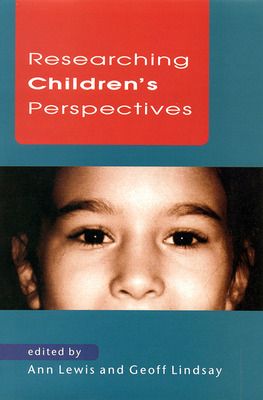Researching Children's Perspectives
- Access the eBook anytime, anywhere: online or offline
- Create notes, flashcards and make annotations while you study
- Full searchable content: quickly find the answers you are looking for
Section one: Theoretical and conceptual issues
Introduction
Researching children's perspectives
ethical issues
The United Nations Convention on the rights of the child
giving children a voice
Researching children's perspectives
legal issues
Researching children's perspectives
a psychological dimension
Researching children's perspectives
a sociological dimension
Section two: Practical applications
Children and young people and care proceedings
A matter of life and death
a reflective account of two examples of practitioner research into children's understanding and experience of death and bereavement
The educational self-perception of children with Down syndrome
Research involving children with severe learning difficulties
Let's do it properly
inviting children to be researchers
Researching 8-13 year olds' perspectives on their experience of religion
A 'risky' business
researching the health beliefs of children and young children
Collecting the views of young people with moderate learning difficulties
Falling out of school
a young woman's reflections on her chequered experience of schooling
Section three: Overview
Appendices
References
Index.
The 1990s have been marked by a growing emphasis, in various professional contexts, on obtaining the views of clients, including children. This position is an international one, shared across the developed world, and encapsulated in the UN Convention on the rights of the child. This book addresses the issues and practicalities surrounding the obtaining of children's views, particularly in the research context. The book takes a deliberately and explicitly pluralist stance. Its distinctiveness rests on the scrutiny of methodological issues pertaining to the collection of children's views and practical applications. The book is structured around two main sections. Section 1 examines five aspects of theoretical and conceptual issues (ethical issues and codes of conduct, children's rights, the legal perspective, developmental dimensions and sociological issues). Section 2 illustrates these aspects by focusing on methods and applications in obtaining children's views in specific projects.
The book is aimed at researchers and graduate students in psychology, social sciences, education, health and law. It will also be of value to a range of professionals involved in eliciting children's views (e.g. psychologists, teachers, social workers, medical workers and the police).

